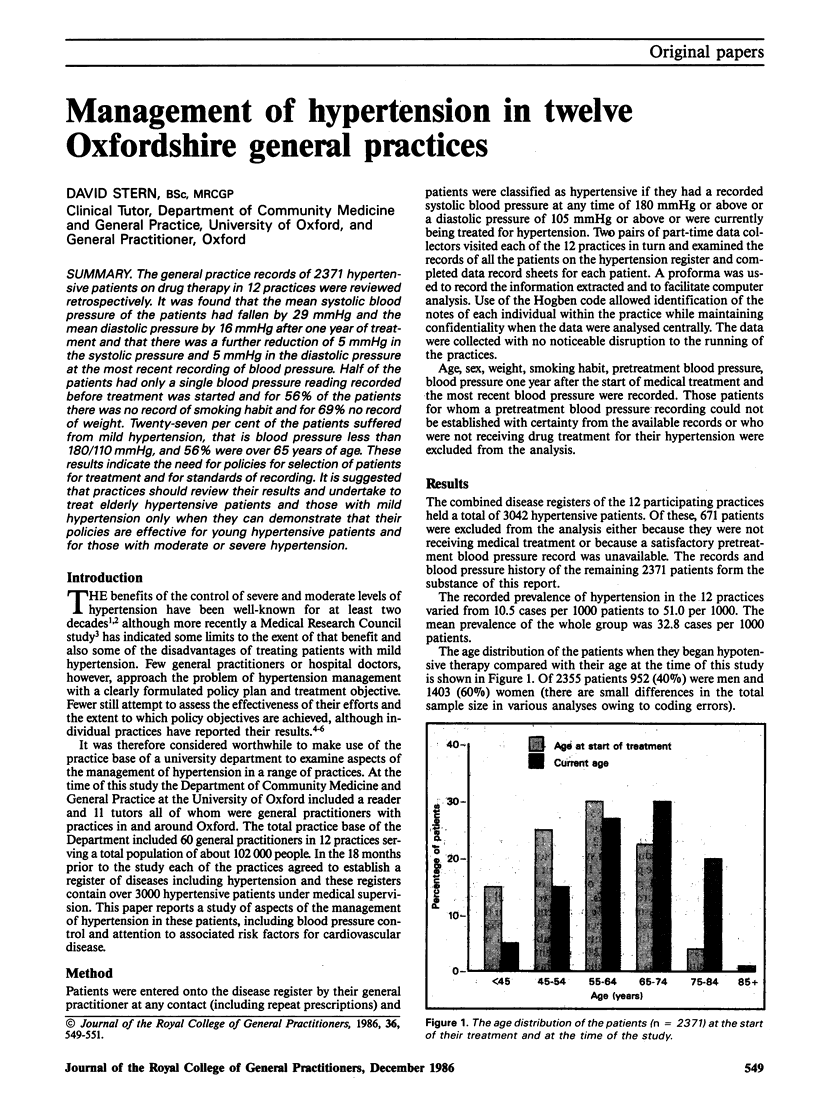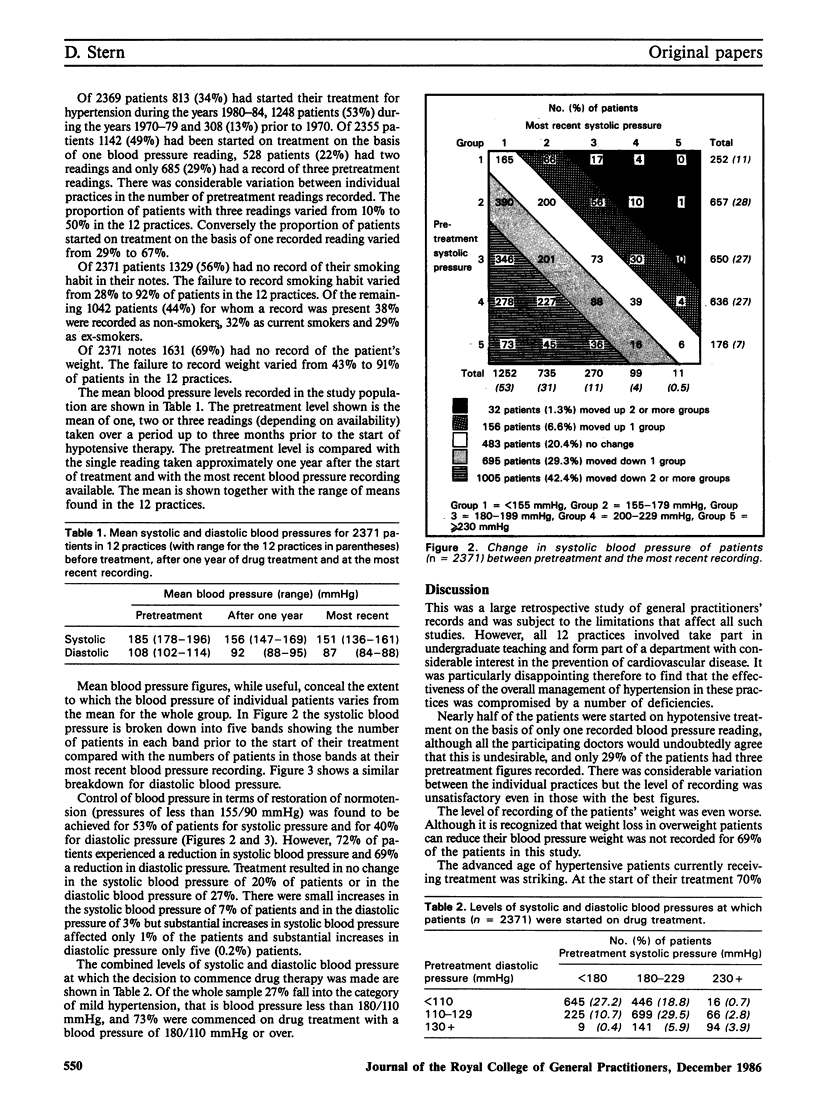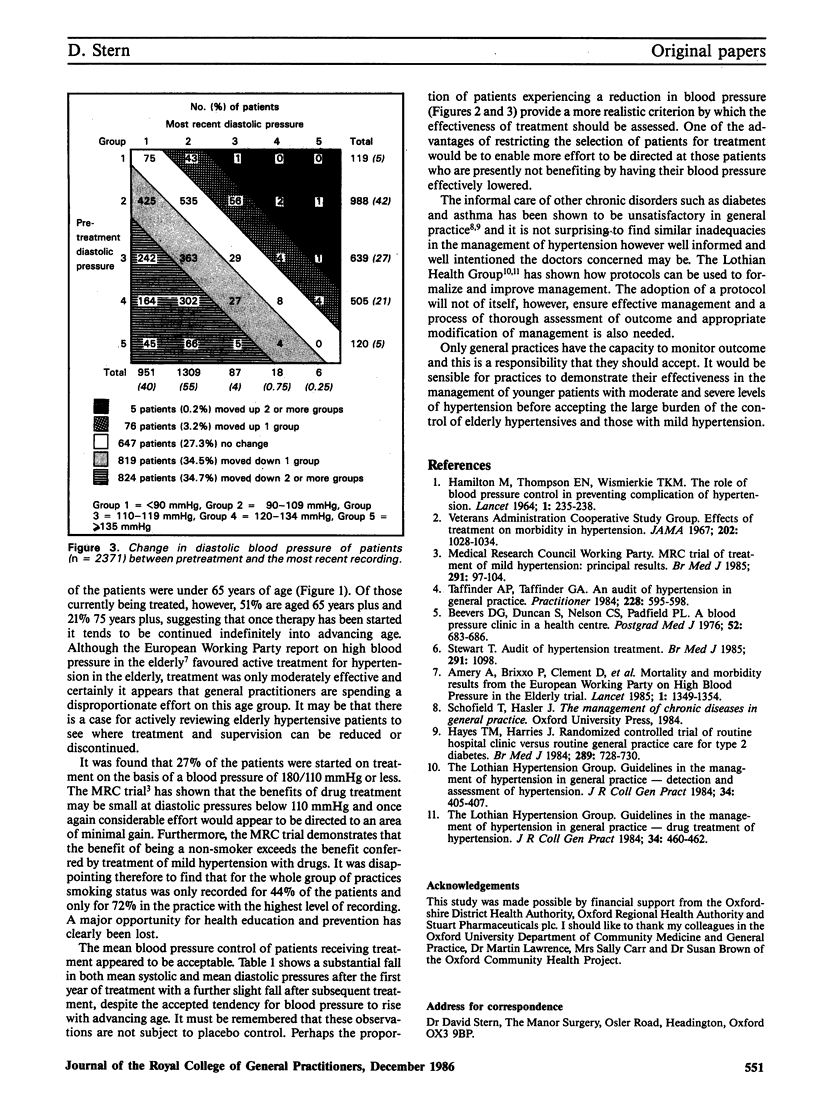Abstract
The general practice records of 2371 hypertensive patients on drug therapy in 12 practices were reviewed retrospectively. It was found that the mean systolic blood pressure of the patients had fallen by 29 mmHg and the mean diastolic pressure by 16 mmHg after one year of treatment and that there was a further reduction of 5 mmHg in the systolic pressure and 5 mmHg in the diastolic pressure at the most recent recording of blood pressure. Half of the patients had only a single blood pressure reading recorded before treatment was started and for 56% of the patients there was no record of smoking habit and for 69% no record of weight. Twenty-seven per cent of the patients suffered from mild hypertension, that is blood pressure less than 180/110 mmHg, and 56% were over 65 years of age. These results indicate the need for policies for selection of patients for treatment and for standards of recording. It is suggested that practices should review their results and undertake to treat elderly hypertensive patients and those with mild hypertension only when they can demonstrate that their policies are effective for young hypertensive patients and for those with moderate or severe hypertension.
Full text
PDF


Selected References
These references are in PubMed. This may not be the complete list of references from this article.
- Amery A., Birkenhäger W., Brixko P., Bulpitt C., Clement D., Deruyttere M., De Schaepdryver A., Dollery C., Fagard R., Forette F. Mortality and morbidity results from the European Working Party on High Blood Pressure in the Elderly trial. Lancet. 1985 Jun 15;1(8442):1349–1354. doi: 10.1016/s0140-6736(85)91783-0. [DOI] [PubMed] [Google Scholar]
- Beevers D. G., Duncan S., Nelson C. S., Padfield P. L. A blood pressure clinic in a health centre. Postgrad Med J. 1976 Nov;52(613):683–686. doi: 10.1136/pgmj.52.613.683. [DOI] [PMC free article] [PubMed] [Google Scholar]
- HAMILTON M., THOMPSON E. M., WISNIEWSKI T. K. THE ROLE OF BLOOD-PRESSURE CONTROL IN PREVENTING COMPLICATIONS OF HYPERTENSION. Lancet. 1964 Feb 1;1(7327):235–238. doi: 10.1016/s0140-6736(64)92344-x. [DOI] [PubMed] [Google Scholar]
- Hayes T. M., Harries J. Randomised controlled trial of routine hospital clinic care versus routine general practice care for type II diabetics. Br Med J (Clin Res Ed) 1984 Sep 22;289(6447):728–730. doi: 10.1136/bmj.289.6447.728. [DOI] [PMC free article] [PubMed] [Google Scholar]
- Stewart T. Audit Reports-Treatment of hypertension. Br Med J (Clin Res Ed) 1985 Oct 19;291(6502):1095.1098–1095.1098. doi: 10.1136/bmj.291.6502.1095-b. [DOI] [PMC free article] [PubMed] [Google Scholar]
- Taffinder A. P., Taffinder G. A. An audit of hypertension in general practice. Practitioner. 1984 Jun;228(1392):595–598. [PubMed] [Google Scholar]


